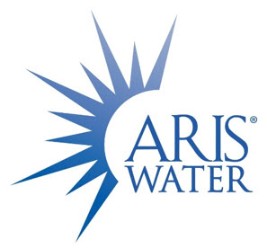Use of Non-GAAP Financial Information
The Company uses financial measures that are not calculated in accordance with U.S. generally accepted accounting principles (“GAAP”), including Adjusted EBITDA, Adjusted Operating Margin, Adjusted Operating Margin per Barrel, Adjusted Net Income and net debt and leverage ratio. Although these Non-GAAP financial measures are important factors in assessing the Company’s operating results and cash flows, they should not be considered in isolation or as a substitute for net income or gross margin or any other measures prepared under GAAP.
The Company calculates Adjusted EBITDA as net income (loss) plus: interest expense; income taxes; depreciation, amortization and accretion expense; abandoned well costs, asset impairment and abandoned project charges; losses on the sale of assets; transaction costs; research and development expense; loss on debt modification; stock-based compensation expense; and other non-recurring or unusual expenses or charges (such as temporary power costs, litigation expenses and severance costs), less any gains on sale of assets. For the fourth quarter of 2022, we began including research and development expense in our calculation of Adjusted EBITDA due to our new beneficial reuse pilot projects, which are discreet, non-revenue initiatives.
The Company calculates Adjusted Operating Margin as Gross Margin plus depreciation, amortization and accretion. The Company defines Adjusted Operating Margin per Barrel as Adjusted Operating Margin divided by total volumes.
The Company calculates Adjusted Net Income as Net Income (Loss) plus the after-tax impacts of stock-based compensation and plus or minus the after-tax impacts of certain items affecting comparability, which are typically noncash and/or nonrecurring items. The Company calculated Diluted Adjusted Net Income Per Share as (i) Net Income (Loss) plus the after-tax impacts of stock-based compensation and plus or minus the after-tax impacts of certain items affecting comparability, which are typically noncash and/or nonrecurring items, divided by (ii) the diluted weighted-average shares of Class A common stock outstanding, assuming the full exchange of all outstanding LLC interests, adjusted for the dilutive effect of outstanding equity-based awards.
For the quarter ended September 30, 2023, the Company calculates its leverage ratio as net debt as of September 30, 2023, divided by Adjusted EBITDA for the trailing twelve months. Net debt is calculated as the principal amount of total debt outstanding as of September 30, 2023, less cash and cash equivalents as of September 30, 2023.
The Company believes these presentations are used by investors and professional research analysts for the valuation, comparison, rating, and investment recommendations of companies within its industry. Similarly, the Company’s management uses this information for comparative purposes as well. Adjusted EBITDA, Adjusted Operating Margin, Adjusted Operating Margin per Barrel, and Adjusted Net Income are not measures of financial performance under GAAP and should not be considered as measures of liquidity or as alternatives to net income (loss) or gross margin. Additionally, these presentations as defined by the Company may not be comparable to similarly titled measures used by other companies and should be considered in conjunction with net income (loss) and other measures prepared in accordance with GAAP, such as gross margin, operating income, net income or cash flows from operating activities.
Although we provide forecasts for the non-GAAP measures Adjusted EBITDA and Adjusted Operating Margin per Barrel, we are not able to forecast their most directly comparable measures (net income and gross margin) calculated and presented in accordance with GAAP without unreasonable effort. Certain elements of the composition of forward-looking non-GAAP metrics are not predictable, making it impractical for us to forecast. Such elements include but

